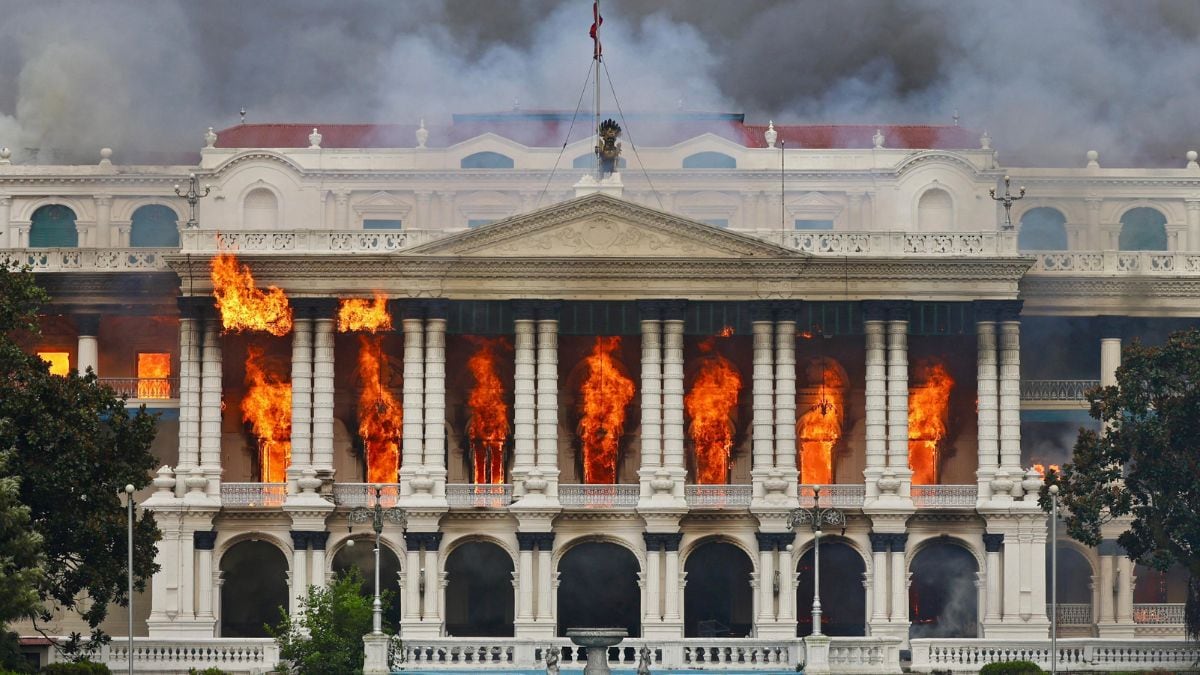[caption id=“attachment_2180749” align=“aligncenter” width=“940”]  Villarrica volcano in Southern Chile recently erupted after a brief period of inactivity. The explosion resulted in a massive surge of lava into the air and its surroundings, causing authorities to call for alert level orange, which is the second to the highest ranking. (Reuters image)[/caption] [caption id=“attachment_2180753” align=“aligncenter” width=“940”]  The Villarrica expelled smoke as scientists warn the concentration of lava, contained within the structure, is close to the crater. On March 3, a short-lived eruption of ash and rock led to the evacuation of thousands from the nearby area. Authorities have restricted access to the area within 5 kilometres of the crater. (Reuters image)[/caption] [caption id=“attachment_2180755” align=“aligncenter” width=“940”]  The 9,000 foot (2,847-metre) Villarrica volcano in Chile’s central valley, 400 miles (670 kilometres) south of Santiago, sits above the small city of Pucon, which has a population of about 22,000 people. The series of the volcanoes’ latest eruptions started on 7 February, causing minor ash plumes and sporadic explosions, which made the authorities raise a yellow level alert. (Reuters image)[/caption] [caption id=“attachment_2180757” align=“aligncenter” width=“940”]  Villarrica Volcano is the one of the most active volcanoes in Chile. It is a snow-capped stratovolcano that measures 2,860 metres high. It is considered as one of the most active volcanoes with a record of 66 eruptions since the Europeans arrived in the country. (Reuters image)[/caption] [caption id=“attachment_2180759” align=“aligncenter” width=“940”]  An aerial view shows smoke and ash rising from Villarrica Volcano. Villarrica Volcano which erupted earlier this month before settling down, has entered a more active phase again, expelling gas and ash into the atmosphere, Chilean authorities. (Reuters image)[/caption] [caption id=“attachment_2180761” align=“aligncenter” width=“940”]  The Villarrica volcano went quiet on after the eruption that sent a plume of ash and lava high into the sky in the early hours put Chile on high alert. (Reuters image)[/caption] [caption id=“attachment_2180763” align=“aligncenter” width=“940”]  Ash and lava spew from the Villarrica volcano, as seen from Pucon on 3 March. Volcano Villarrica in southern Chile erupted in the early hours of Tuesday, sending a plume of ash and lava high into the sky, and forcing the evacuation of nearby communities. (Reuters image)[/caption] [caption id=“attachment_2180765” align=“aligncenter” width=“940”]  Major eruptions in 1985 and 1992 added lava layers and two new cones to Villarrica. Historical records of this volcano’s eruptions go back to 1558. (Reuters image)[/caption]
Major eruptions in 1985 and 1992 added lava layers and two new cones to Villarrica. Historical records of this volcano’s eruptions go back to 1558.
Advertisement
End of Article
Written by FP Archives
see more


)

)
)
)
)
)
)
)
)



